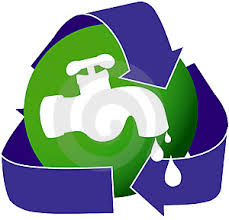The hot topic of today is water conservation. As we all know that 75% of the world is filled with water one may think that there would be no water scarcity. But, technically only 2% of the water available is fresh water. Unfortunately, only 0.036% is available for our consumption while the rest are lodged up in the polar ice caps. So it has become a necessity to conserve the fresh water. Most of the methods are quite Eco friendly and less expenses. But, the general public is not aware of the situation. Various government agencies are now taking measures to conserve the fresh water.
Water is needed for all the living organisms and human beings are the most dependant ones. Without water no living organisms can survive. Our planet`s uniqueness is because we have water in it. But, are we taking good care of the planet which is the only one in our solar system with this precious natural resource! The apt answer would be “no”. We are not concerned about the later part of life. We want to make today a better place to live in. The situation is going out of our hands. We must start to conserve water because, if we continue to waste water at this rate, the future generation would become the prey for our doing. In our homes we use water for all purposes. And these waters are let off without a second use. In such conditions, waste water management can come in handy. This topic has been largely ignored by many nations. In Rio + 20 summits the official outcome documents say this “We stress the needs to adopt measures to significantly reduce water pollution and increase water quality and reduce water losses.” The above lines mention the request put out by the most powerful organization for the conservation of our planet. Some places in India, drinking water is of some cost. It’s because of human being’s action that we are in this situation.
Water pollution is considered as the main and imminent threat that we have to face. In a developing country like India, this is a major concern. We would have often seen on roadsides the dirty sewage water and we wonder where they would go. While the sewage water ends up in a stream or lake or any other water body and contaminates the clean water. A study conducted by a government organization for preservation of water bodies has found out that untreated sewage is the largest source of pollution of surface and water pollution. Frankly speaking, our country, not only lacks the sufficient treatment capacity, but also the sewage treatment plants is not well maintained and utilized.
The WHO conducted a study in India in 1992 and found out the following facts.
1.114 cities have been dumping untreated sewage into water bodies.
2. Only 8 cities have fully functioning sewage treatment plans.
3. Water samples collected from 1995-2008 shows that bacterial and organic contamination is severe in the water bodies.
Well, what can we do to solve this problem, which has put our country in the third place globally on the worst polluters list? We may think that it is the responsibility of the authorities to take care of this, but, just think for yourselves that, a country ranking second in the world population, how many problems can the authorities take care of. So it is partially the responsibility of the public to help save our country and preserve our earth. We need oxygen and well the plants are the producers of oxygen. But plants need water and hence all the activities on earth are directly or indirectly dependant on water management. The water disposed from our homes can be treated again and used for watering lawns and cleaning activities. When it rains the water run-off from the roofs of our houses can be collected and used for the latter purpose. People should be more aware of the countermeasures to tackle the water problems in our country and waste water management is one of the most economical and the easiest way to tackle this problem and help us make our country and planet a nice place to live.
There are two main treatments of waste water,
The primary treatment process aims to remove the solid particles like stones, waste particles thrown into water and other toxic stuffs from the water by physical or chemical methods. The four methods by which this treatment takes place is
1. Screens
2. Grit chambers
3. Gravity Sedimentation.
4. Chemical precipitation.
Secondary treatment process: The main concept of this treatment is to use micro-organisms. These organism breaks down components of waste into less damaging forms. The 10 treatments included in this category are,
1. Biological treatment
2. Activated Sludge
3. Aeration
4. Sedimentation tanks.
5. Anoxic sludge
6. Lagoons
7. Fixed film reactors
8. Trickling filters and two more.
These are just the scientific methods used in treatment plans. But, we can also do this in our homes by just implementing the primary treatment process which is economical and easy. We have to take initiative to save ourselves from water pollution. Don’t make it too late for recovery.
Save earth! Go green.




Leave a Reply